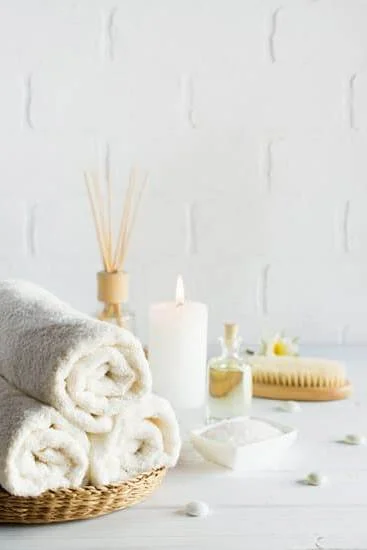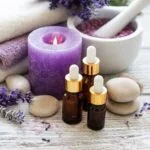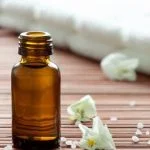Aromatherapy has gained popularity as a holistic approach to wellness, using essential oils to promote relaxation, reduce stress, and address various physical ailments. One crucial aspect of aromatherapy is understanding how many drops of essential oils to use for different treatments. The right amount of essential oil can significantly impact the effectiveness of aromatherapy sessions, making it important to know the proper dosage for each application.
Essential oils are natural extracts from plants that possess unique therapeutic properties. They have been used for centuries in traditional medicine and are now widely incorporated into modern aromatherapy practices. Whether it’s for promoting better sleep, easing muscle tension, or enhancing mood, the correct dosage of essential oils is essential for achieving desired results.
In this article, we will delve into the world of aromatherapies and essential oils. We will discuss the importance of using the right amount of essential oils for effective treatment sessions and explore safety precautions to consider. Additionally, we will provide a general guideline for determining how many drops of essential oil to use for various aromatherapy treatments.
Understanding Essential Oils
When it comes to aromatherapy, essential oils are the key ingredient in creating a relaxing and therapeutic environment. These volatile oils are derived from a variety of plants and botanical sources, each with its own unique properties and benefits for mental and physical well-being.
Common essential oils used in aromatherapy include lavender, peppermint, eucalyptus, tea tree, and lemon, among many others. These oils are known for their ability to promote relaxation, reduce stress and anxiety, improve sleep quality, and even alleviate certain physical ailments.
Each essential oil possesses distinct properties that contribute to their therapeutic effects. For example, lavender is well-known for its calming effect on the mind and body, making it an ideal choice for relaxation and stress relief. On the other hand, peppermint oil is often used to invigorate the senses and provide relief from headaches or nausea. Understanding the specific properties of different essential oils allows individuals to select the most suitable options for their aromatherapy needs.
Moreover, it’s important to recognize that the number of drops of essential oil used in aromatherapy treatments can vary based on the desired outcome. For instance, a few drops of lavender oil may be sufficient for promoting relaxation in a small room or personal space.
In contrast, a larger space or more intense treatment goals may require a higher quantity of essential oil. Ultimately, understanding the properties and benefits of different essential oils is crucial in determining how many drops to use for effective aromatherapy sessions.
Safety Precautions
When using essential oils for aromatherapy treatments, it is crucial to prioritize safety to avoid any potential adverse reactions. One of the most important safety precautions when using essential oils is to dilute them before application. Undiluted essential oils can cause skin irritation, sensitization, or other allergic reactions, so it is essential to dilute them with a carrier oil before applying them to the skin.
The general guideline for dilution is to use 2-3 drops of essential oil per teaspoon of carrier oil. This ensures that the essential oils are used in a safe and effective manner.
In addition to dilution, it is equally important to use the correct amount of essential oils for different applications. Using too many drops of essential oil can be overwhelming and potentially harmful, while using too few drops may not provide the desired therapeutic effect. Therefore, understanding how many drops of essential oil to use for specific aromatherapy treatments is vital for achieving the best results while ensuring safety.
It is also important to consider individual sensitivity when determining the number of drops of essential oils to use. Some individuals may be more sensitive than others, so it is crucial to start with a lower number of drops and gradually increase based on personal tolerance and preference.
Additionally, considering the purpose of the treatment and the size of the room where aromatherapy will take place can also influence how many drops of essential oil should be used. By taking these factors into account, individuals can ensure that they use the right amount of essential oils for safe and effective aromatherapy treatments.
How Many Drops to Use
Essential oils are powerful tools for various aromatherapy treatments, but determining the right amount of essential oil to use can be a bit challenging. The number of drops of essential oils for aromatherapy treatments can vary depending on the purpose of the treatment, individual sensitivity, and the size of the room or space where the treatment will take place.
It is important to use an appropriate amount of essential oil to achieve the desired therapeutic effects while ensuring safety and avoiding adverse reactions.
In general, a good rule of thumb for adult users is to start with 3-5 drops of essential oil for every 100 milliliters of water in a diffuser. For direct inhalation, such as using a personal inhaler or adding a few drops to a tissue, 1-2 drops are usually sufficient.
When it comes to topical application, such as adding essential oils to carrier oils for massage or skincare purposes, it is recommended to dilute essential oils at a rate of 1-2% for most adults (which equals about 6-12 drops per ounce of carrier oil).
When using essential oils for children, elderly individuals, or those with sensitive skin or health conditions, it is important to adjust the number of drops accordingly and consult with a qualified aromatherapist if necessary. Additionally, customized blends may require different ratios and numbers of drops depending on the specific combination of essential oils being used.
Experimenting with different blends and adjusting the number of drops based on personal preferences and therapeutic goals can lead to more personalized and effective aromatherapy experiences.
| Application Method | Recommended Number of Drops |
|---|---|
| Diffuser (per 100ml water) | 3-5 drops |
| Direct Inhalation | 1-2 drops |
| Topical Application (per ounce carrier oil) | 6-12 drops |
Aromatherapy Diffusers
When using a diffuser for aromatherapy treatments, it is important to consider the size of the room where the diffuser will be used. Larger rooms may require more drops of essential oil to achieve the desired level of aroma, whereas smaller rooms may need fewer drops. As a general guideline:
- For small rooms up to 200 square feet: 3-5 drops of essential oil
- For medium-sized rooms between 200-400 square feet: 5-7 drops
- For larger rooms over 400 square feet: 7-10 drops
It is important to note that these guidelines are approximate and can vary based on the potency of the essential oil being used and personal preference. Factors such as individual sensitivity to smell and the purpose of the treatment should also be considered when determining how many drops to use in a diffuser for aromatherapy.
In addition to room size, the type of diffuser being used can also impact how many drops of essential oils are needed. For example, nebulizing diffusers typically require fewer drops compared to ultrasonic ones because they release a more concentrated mist.
It’s important to follow the manufacturer’s instructions for your specific type of diffuser and experiment with different amounts to find what works best for you. Remember that less is often more when it comes to aromatherapy, as overly strong scents can be overwhelming rather than relaxing.
Direct Inhalation and Topical Application
When it comes to aromatherapy treatments, the number of drops of essential oils used for direct inhalation and topical application plays a crucial role in achieving the desired therapeutic effects. For direct inhalation, a general guideline is to use 3-5 drops of essential oil in a diffuser or bowl of hot water.
However, this can vary based on factors such as the individual’s sensitivity to strong scents and the size of the room where the treatment takes place. It is important to start with a lower number of drops and adjust as needed to avoid overwhelming the senses.
For topical application, essential oils are often diluted in carrier oils before being applied to the skin. A common dilution ratio is 2-3 drops of essential oil per teaspoon of carrier oil. This helps prevent skin irritation and allows for safer absorption of the essential oils into the body. The number of drops needed may also depend on the specific purpose of the treatment – for example, a massage blend may require more drops than a facial serum.
Overall, it is crucial to understand that individual responses to essential oils can vary widely, so it is important to start with small amounts and gradually increase as needed. Furthermore, seeking advice from a qualified aromatherapist or healthcare professional can provide personalized recommendations based on individual needs and preferences.
| Method | Number of Drops |
|---|---|
| Direct Inhalation | 3-5 drops in diffuser or hot water |
| Topical Application | 2-3 drops per teaspoon of carrier oil |
Custom Blends
When it comes to aromatherapy, creating custom blends of essential oils can add a personalized touch to your treatment sessions. Whether you are looking to promote relaxation, uplift your mood, or alleviate stress, blending different essential oils can help you achieve the desired effects. But how many drops of essential oils should you use when creating custom blends for aromatherapy treatments?
To create a custom blend of essential oils for aromatherapy, it is important to consider the purpose of the treatment and the individual’s personal preferences. Whether you are using a diffuser, inhalation, or topical application method, the number of drops used in the blend will depend on several factors. Here are some general guidelines for creating custom blends and determining how many drops of essential oils to use:
- Choose a base note, middle note, and top note essential oil for your blend
- For a basic 2% dilution rate in carrier oil, use about 12 drops of essential oil per ounce of carrier oil
- Adjust the number of drops based on the intended strength and purpose of the blend
Experimentation is key when creating custom blends for aromatherapy treatments. It is recommended to start with a lower number of drops and gradually increase based on personal preference and sensitivity. By understanding how different essential oils interact and their individual properties, individuals can create unique blends that cater to their specific needs for relaxation, stress relief, or therapeutic benefits.
Creating custom blends of essential oils for aromatherapy treatments offers a holistic approach to wellness by allowing individuals to tailor their treatment sessions according to their preferences and needs. Whether it’s promoting better sleep, boosting energy levels, or enhancing mental clarity, custom blends can provide an effective and personalized aromatherapy experience. With proper research and experimentation with different essential oils and drop amounts, individuals can discover their perfect blend for optimal benefits from aromatherapy treatments.
Conclusion
In summary, using the right amount of essential oils is crucial for effective aromatherapy treatments. Understanding the properties and benefits of different essential oils, as well as adhering to safety precautions such as proper dilution, can ensure a positive experience with aromatherapy. When determining how many drops of essential oils to use, it is important to consider factors such as room size, individual sensitivity, and the specific purpose of the treatment.
Furthermore, the use of diffusers can also impact the number of drops required for aromatherapy sessions. Whether utilizing direct inhalation, topical application, or custom blends, it is important to follow recommended guidelines and seek professional advice when necessary. Aromatherapy has the potential to provide relaxation, stress relief, and various therapeutic benefits when approached with care and attention to detail.
As readers explore this fascinating world of aromatherapy and essential oils, they are encouraged to conduct their own research and consider seeking guidance from professionals in order to tailor their approach to their individual needs. Ultimately, finding the perfect balance in the number of drops used for aromatherapy treatments can lead to a more fulfilling and rejuvenating experience.
Frequently Asked Questions
How Many Drops of Essential Oil for Aromatherapy?
The number of drops of essential oil for aromatherapy will depend on the type of oil, the size of the room, and personal preferences. Generally, 5-10 drops are used for smaller spaces, while larger rooms may require 15-20 drops.
How Many Drops of Oil Do You Put in an Aroma Diffuser?
When using an aroma diffuser, the number of drops of oil depends on the size of the diffuser’s water tank. Typically, 3-5 drops per 100ml of water is a good starting point. It’s important to follow the manufacturer’s recommendations for your specific diffuser.
Is 4 Drops of Essential Oil Too Much?
Whether 4 drops of essential oil is too much depends on various factors such as the type of oil used and individual sensitivity. For some people, 4 drops may be overwhelming, while others may find it just right. It’s best to start with a smaller amount and adjust as needed based on personal preference and comfort.

Are you looking for a natural way to improve your health and wellbeing?
If so, aromatherapy may be the answer for you.





